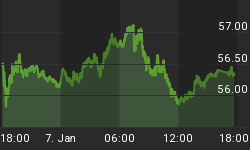The blowup ahead is baked in the cake, just as it was in 2007. "When and where will it start?" is often asked. The proverbial snowflake that launches the avalanche fell some time ago. It is more difficult to interpret the when and where of collapses than in olden days with so much interference in markets. The avalanche rumbling in the distance is probably credit rather than the stock market. Stocks get much more attention, so the blame will most likely fall on Facebook or Yelp! or Twitter or Tweeter or Cynk or Right, On! or Drop Dead!
In the June 2007 and July 2007 issues of Marc Faber's Gloom, Boom, and Doom Report, I described the collapse we were then entering. I discussed similarities to the 1960s and 1980s credit busts. (Credit is usually the reason. In 1929, margin loans, foreign loans, and the Florida Land Bubble pushed the stock market to the point of no return. The dot.com crash in 2000 was made much worse from telecom borrowing.)
This is an introduction to a condensed version of what appeared in the Gloom, Boom, and Doom Report under the title of "Tin Men with Tin Ears." It was abbreviated for the November 2007 issue of Charles Allmon's Growth Stock Outlook.This is also an introduction to the new-and- improved AuContrarian website. "Some Things Never Change" will be a regular feature. Here is a link to the Growth Stock Outlook version of "Tin Men with Tin Ears."
This précis was entirely wrong in one regard. The comparison to the earlier periods went beyond financial similarities to the public outcry that accompanied the destruction. In the 1960s and 1980s, public opinion, the media, Congress, and the courts did justice to the perpetrators. After 2008, the worst offenders, sometimes having committed multiple felonies, were not touched. Not one of them, in the United States, at least, even had to appear in a courtroom. They have gotten richer and richer, with the means to isolate themselves even further from the body politic.
Frederick Sheehan writes a blog at www.aucontrarian.com

















